Eight Traditional Pavilions in Jeonju
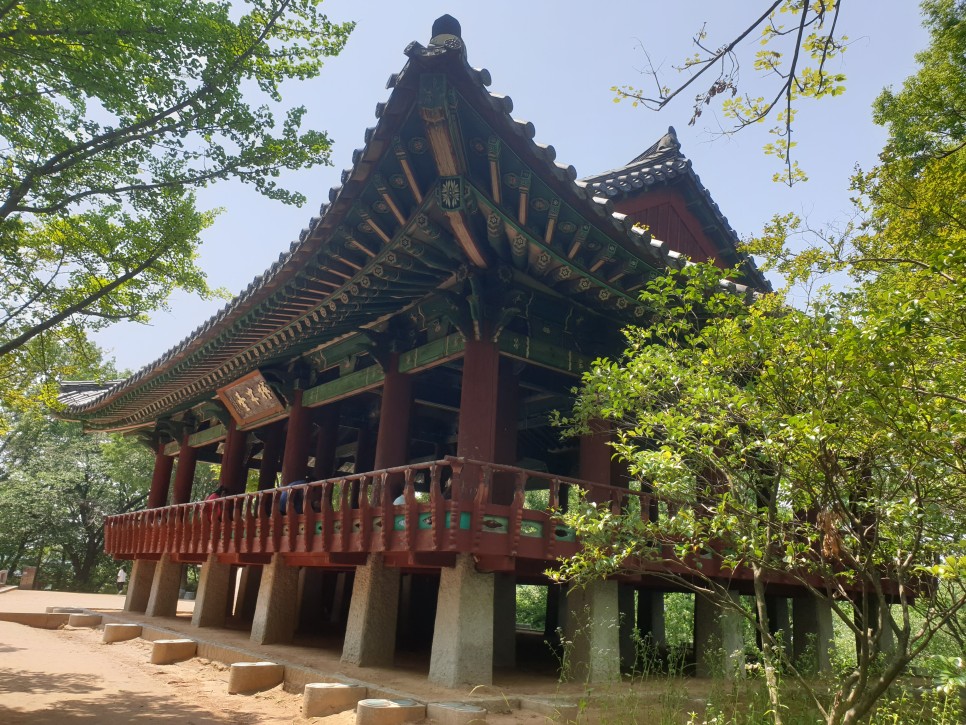
When the tedious monsoon is gone, the hot sunny summer weather will take over. Jeonju has many traditional pavilions where people can take refugee from the sun and enjoy the cool summer breeze.
There are three kinds of traditional pavilions: ‘jeong’, ‘nu’ (or ‘lu’), and ‘dae’. Notice that the names of the traditional pavilions usually end with one of the three. ‘Jeong’ denotes a one-story pavilion (or rising similar to an adult’s height). ‘Nu’ (or ‘lu’) indicates a two-story pavilion (or rising higher than an adult’s height). ‘Dae’ indicates a flat piece of elevated land often used for a watch against enemies. This week, I’ll introduce all three kinds of traditional pavilions in Jeonju.
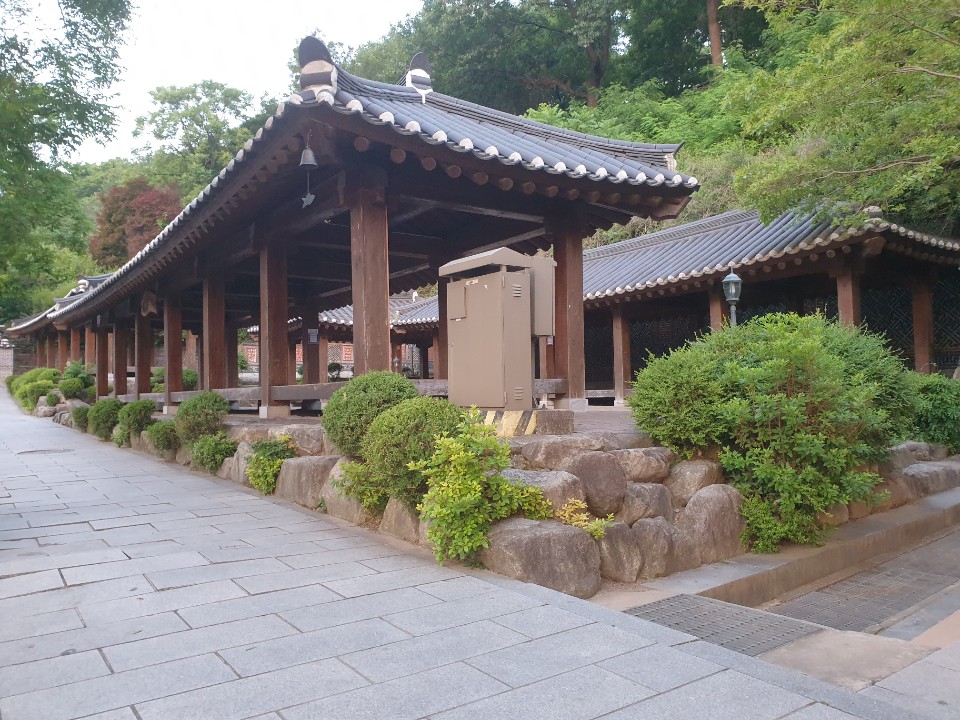
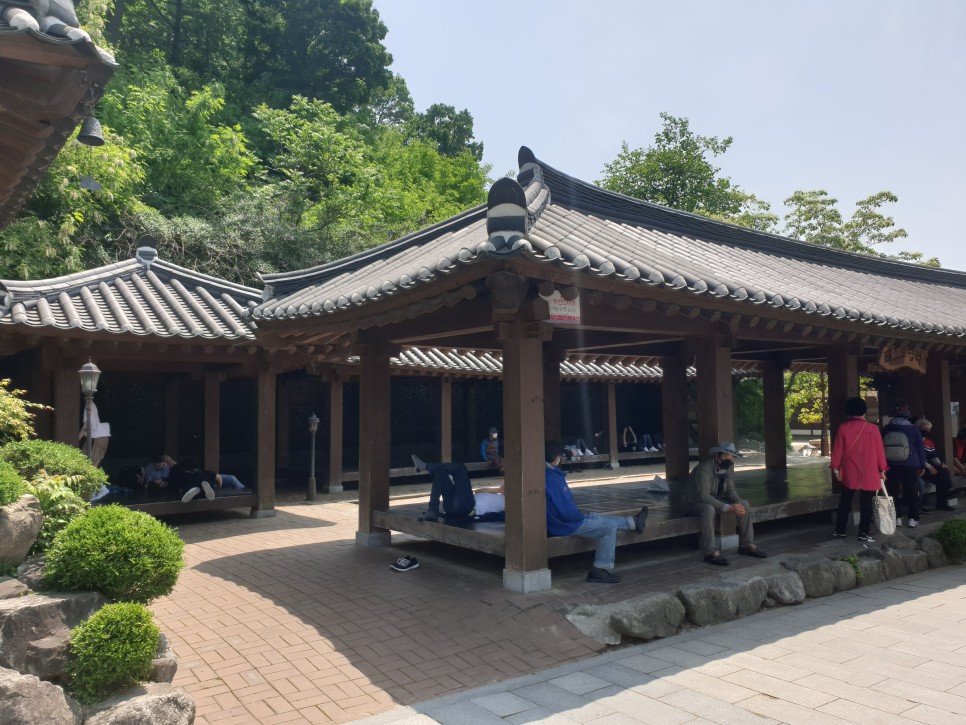
Taejoro Jeongja – the widest pavilion in Jeonju
The Taejoro Jeongja is the traditional pavilion located at Taejoro, the main street of Jeonju Hanok Village. It’s probably the most popular pavilion in Jeonju.
It’s Taejoro ‘Jeong’ja since its not higher than an adult height. The pavilion is usually bustling with visitors. However, in mornings, the pavilion is rather idle except for some elderly residents of the Hanok Village. I believe morning is the best time to feel the ambience of the Hanok Village from the pavilion.
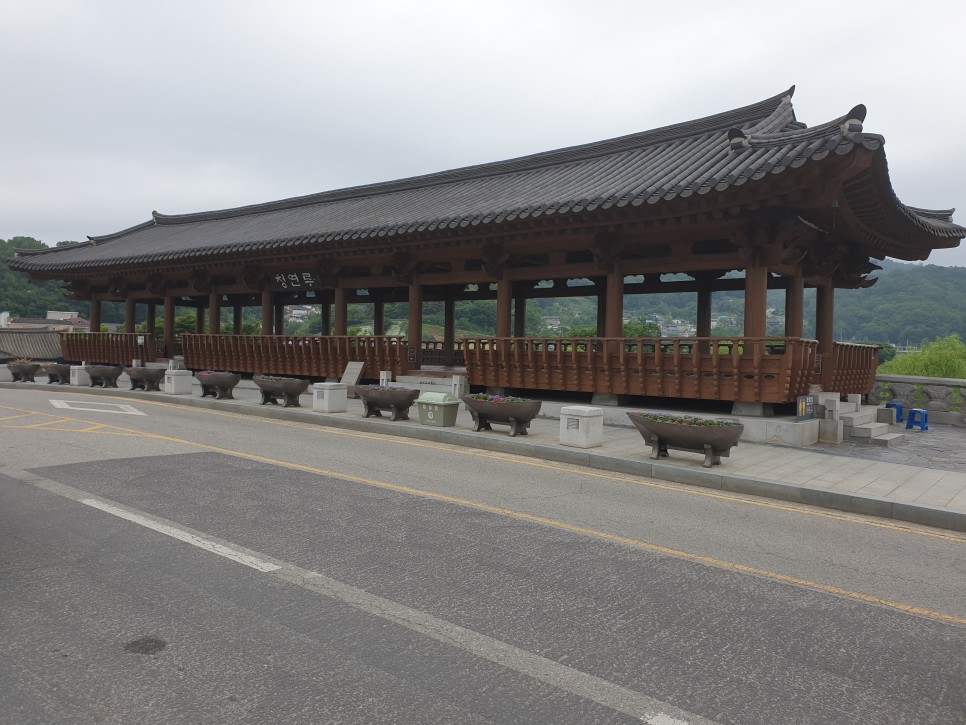
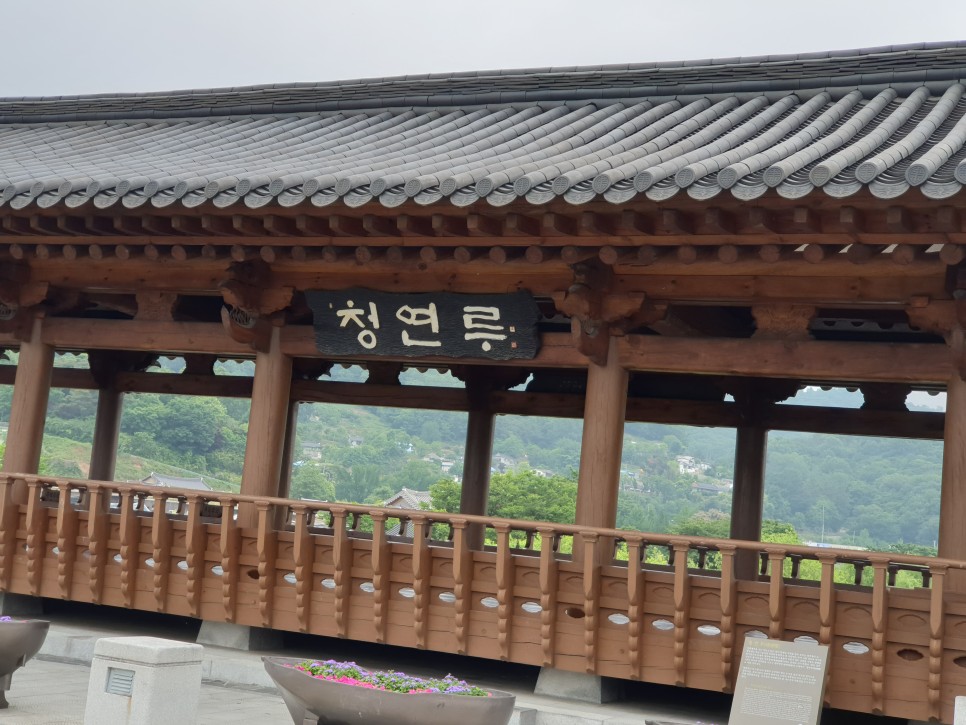

Cheongyeonru – the pavilion built on the bridge
Rising over Jeonjuchun River, Cheongyeonru is a traditional pavilion built in the middle of a bridge. The bridge, Namcheongyo, the new landmark linking Jeonju Hanok Village and Seohak Artist Village. Harmonizing the rainbow structure of the bridge and the Korean traditional pavilion, Cheongyeonru is probably the biggest pavilion in Jeonju.
The view from Cheongyeonru is incredible. Especially during sunset, you can see the Jeonjuchun River, the Hanok Village, and the mountains surrounding Jeonju turning orange and blue. Also, enjoying the summer breeze blowing over the river from the pavilion is a relief from the hot summer weather.
Omokdae – a grand pavilion on the top of a mountain
As the ‘dae’ at the end of its name indicates, Omokdae is built to guard against invaders. Hence, it has the view that overlooks every direction.
The history of Omokdae spans back to several hundred years. In 1380, Lee Sunggye, the founder of Joseon Dynasty, held a party at Omokdae after defeating a massive Japanese invasion. Unfortunately, the visitors are not allowed to hold party here anymore but encouraged to enjoy the atmosphere. Recently, the pavilion had undergone a repair work and will reopen in August.
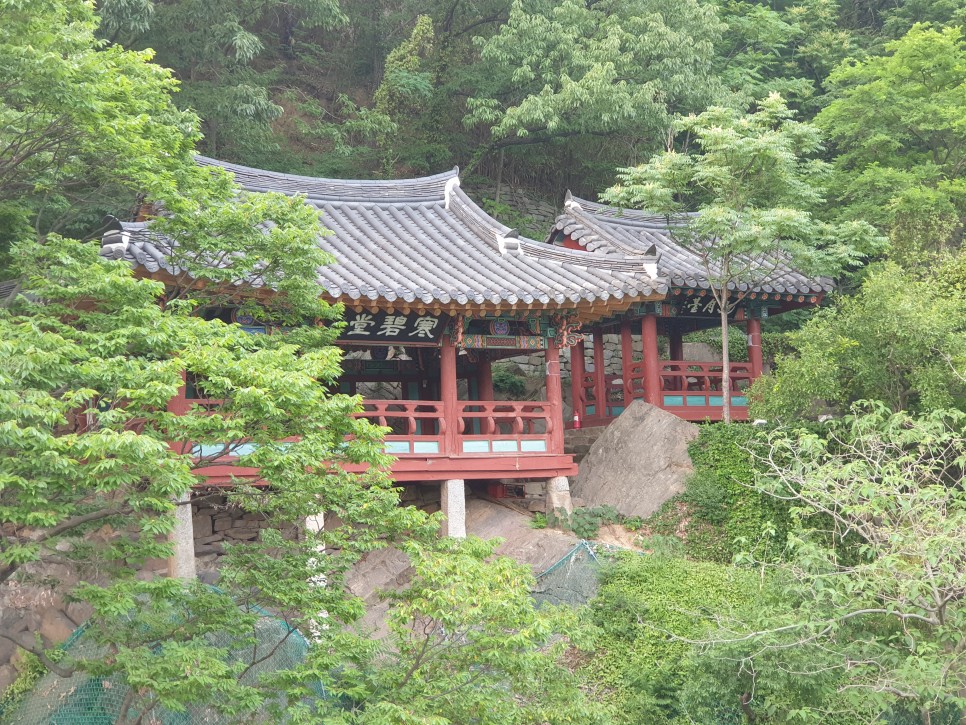
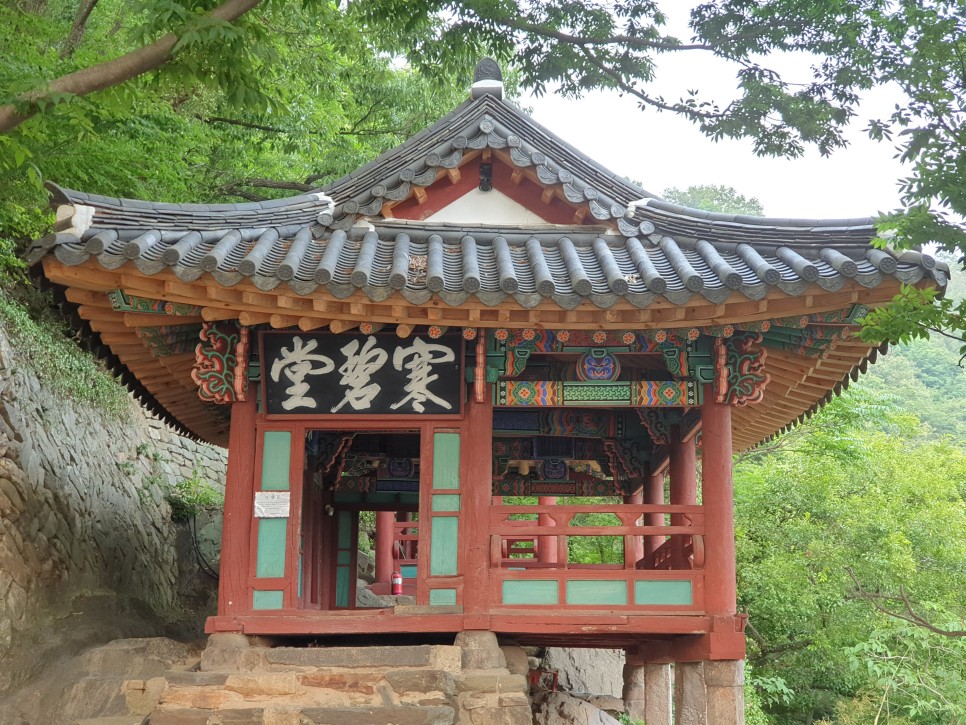
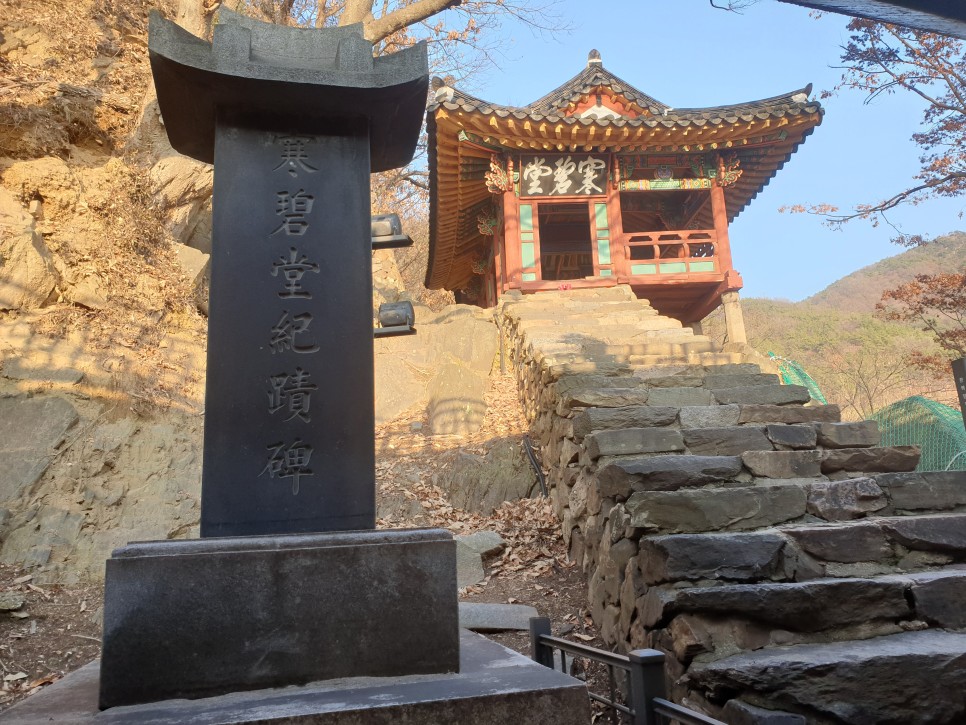
Hanbyukdang – a pavilion over a cliff
The ‘dang’ of Hanbyukdang indicates a building with rooms and walls.
Hanbyukdang is a traditional pavilion built over a cliff. It’s overlooking Jeonjuchun River. Often, the fog rising from the river on a cool morning surrounds Hanbyukdang. The mysterious view of the foggy pavilion is considered one of the best in Jeonju.

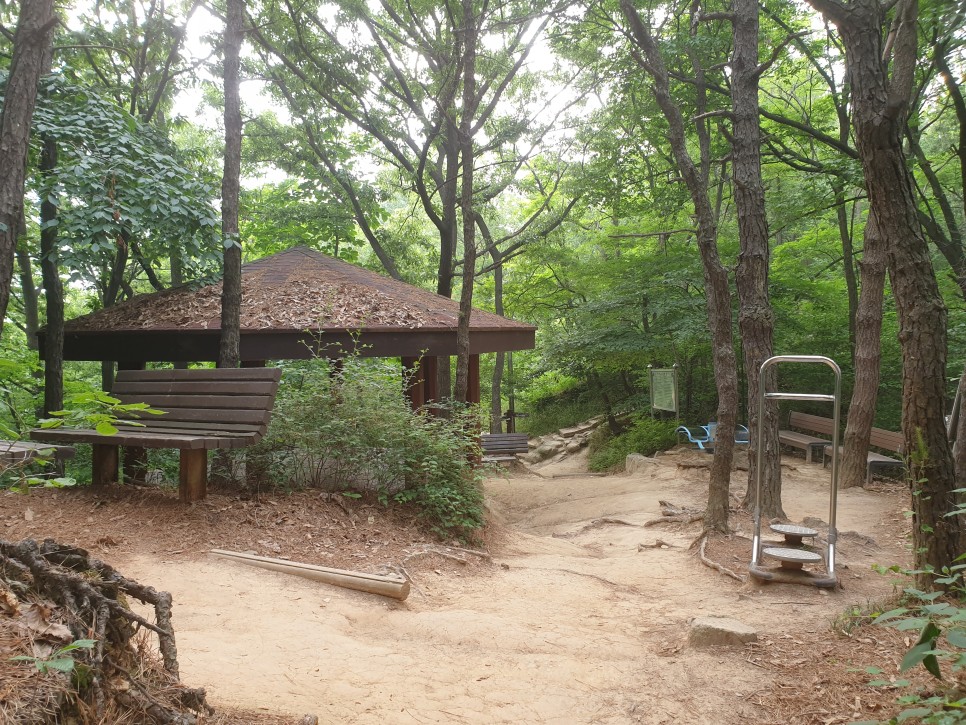
Kirinbong Pavilion – rest area for hikers
This is the pavilion on the Kirinbong trail. Kirinbong is a mountain rising to the east of Jeonju. The mountain is seen from almost anywhere in Jeonju. The trail is frequented by the locals.
The pavilion appears when the breath is about to get short. The local hikers take a good care of this place, so that the pavilion is always clean. Everyone is welcome to use the outdoor exercise machines too.
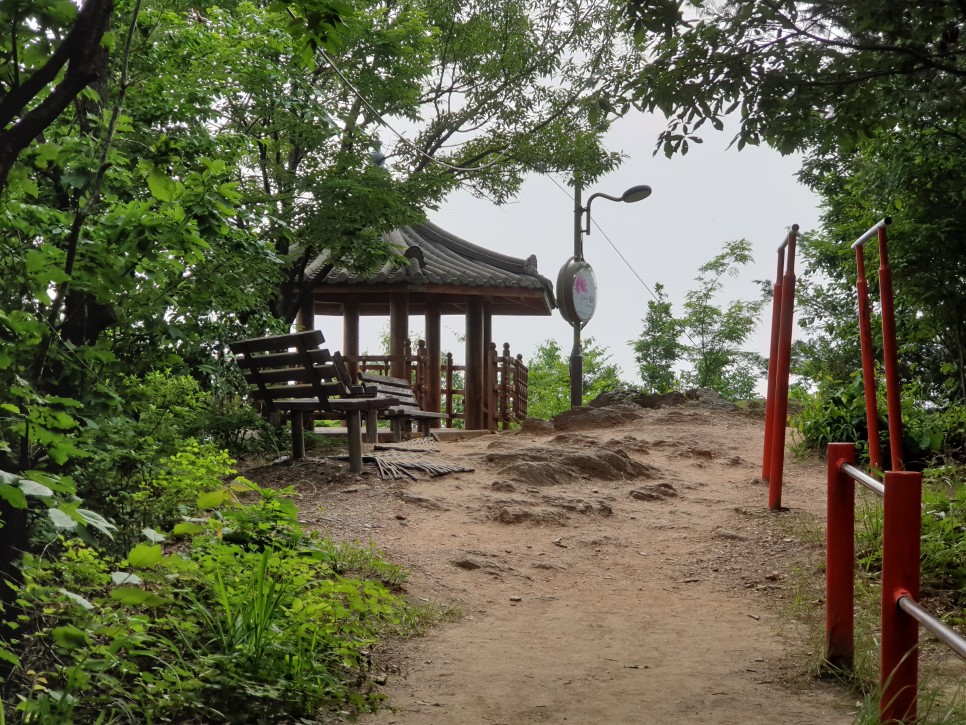
Keep on hiking, there’s another pavilion near the top of Kirinbong. From the pavilion, you’ll have the whole city under your feet. The unforgettable view and the cool breeze from the mountain top are the rewards for the long sweaty summer hike. Enjoy!
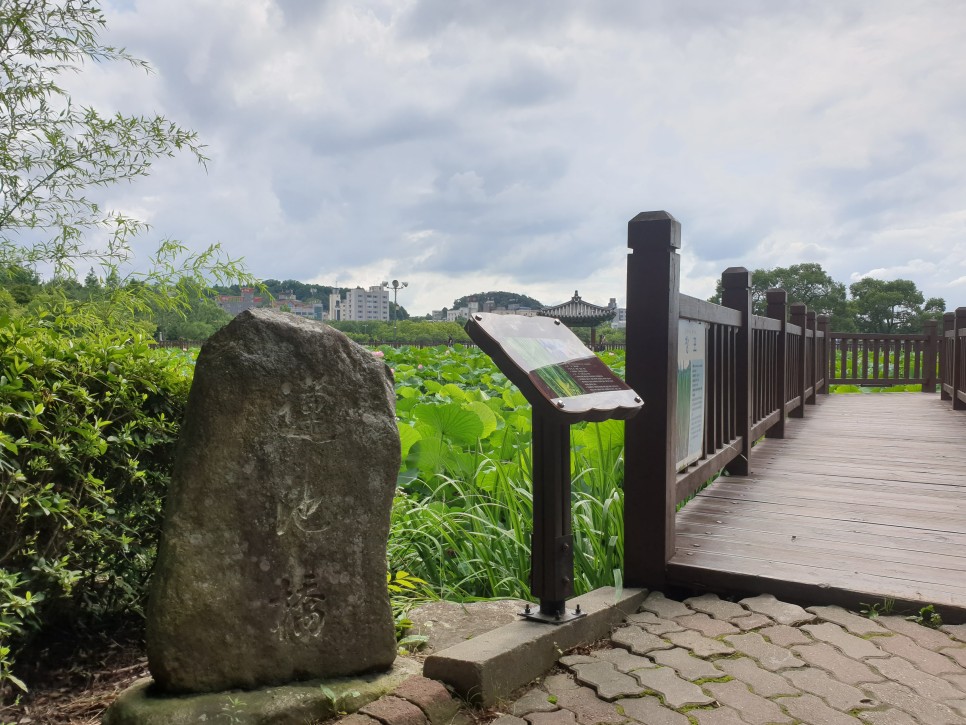

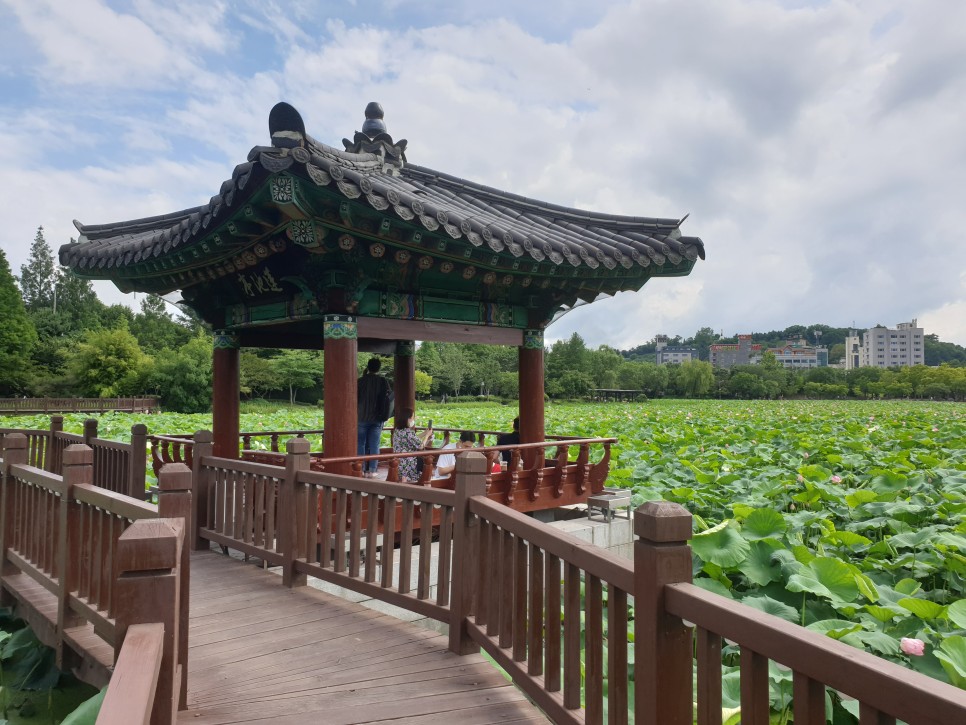
Yeonjijeong – the pavilion surrounded by lotus flowers
Deokjin Park is the favorite urban park for all generations of the locals. Summer is the best time to visit the park since the lotus flowers are blooming.
Legend says that Deokjin Lake is built over a thousand years ago. The strong scent of the lotus flowers in full bloom dominates the park.
There are a few pavilions in Deokjin Park, but I recommend Yeonjijeong. Located in the middle of the bridge over the lake, the pavilion is surrounded by the lotus flowers. It seems as if I’ve just walked into a heaven.

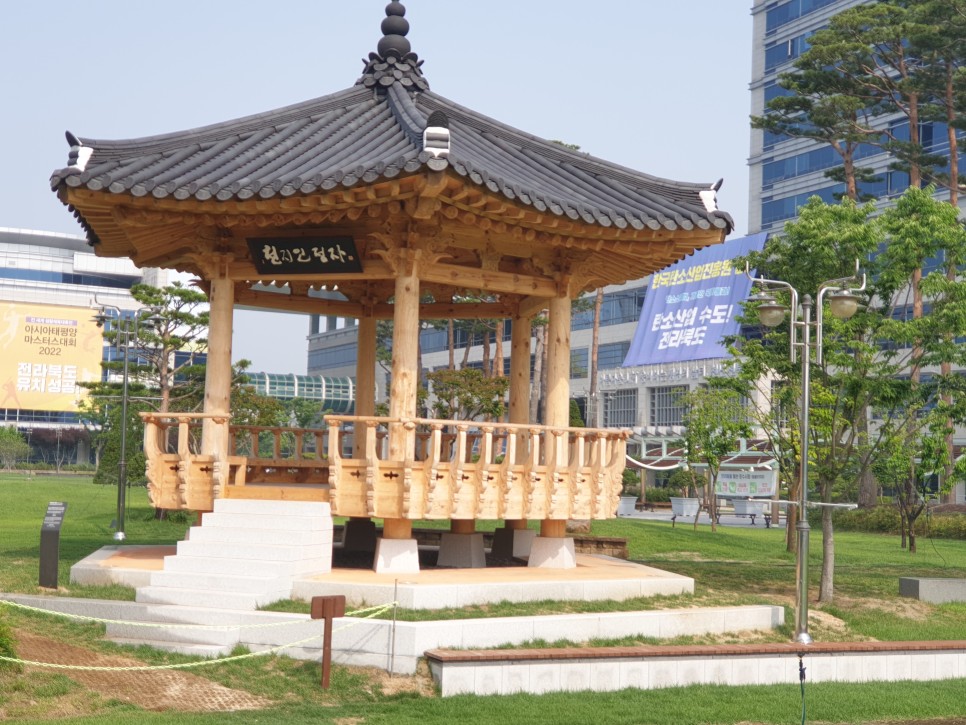
Chunjiin Jeongja – the pavilion at Jeonbuk Provincial OFfice
Jeonju is where the Provincial Office of Jeollabuk-do is located. The provincial office always busy with people. In the middle of the busy plaza at the front of the main building is a traditional pavilion oozing the nice woody scent. In 2019, the provincial office built a traditional pavilion to commemorate the 1000th anniversary of the province.
The name of the pavilion is ‘Chunjiin (sky, earth, and human) Jeongja’. The name conveys the will to harmonize people.
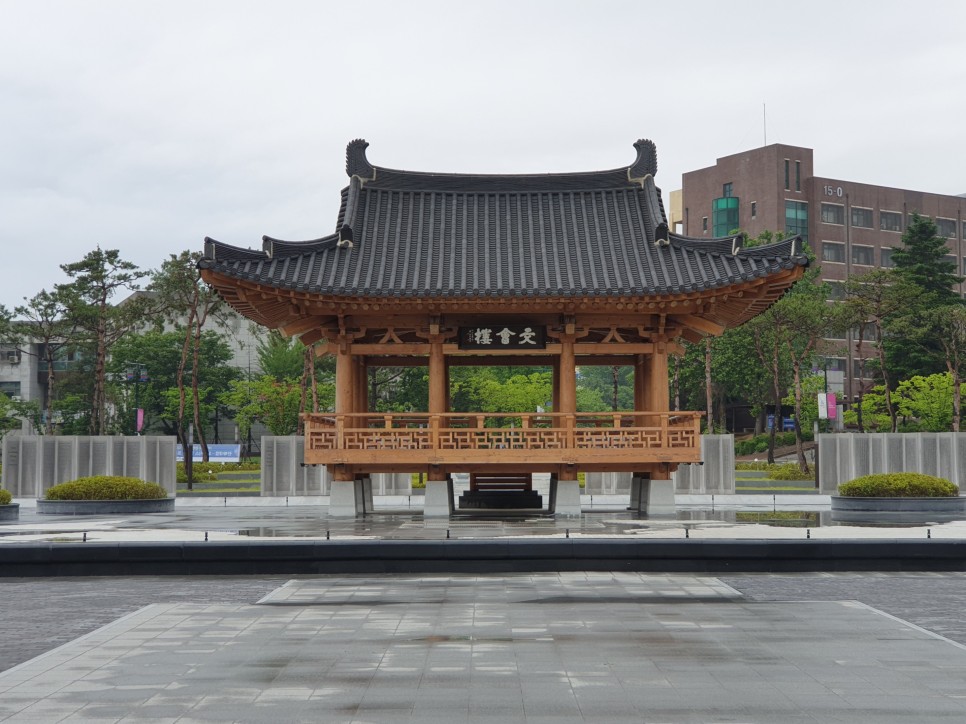
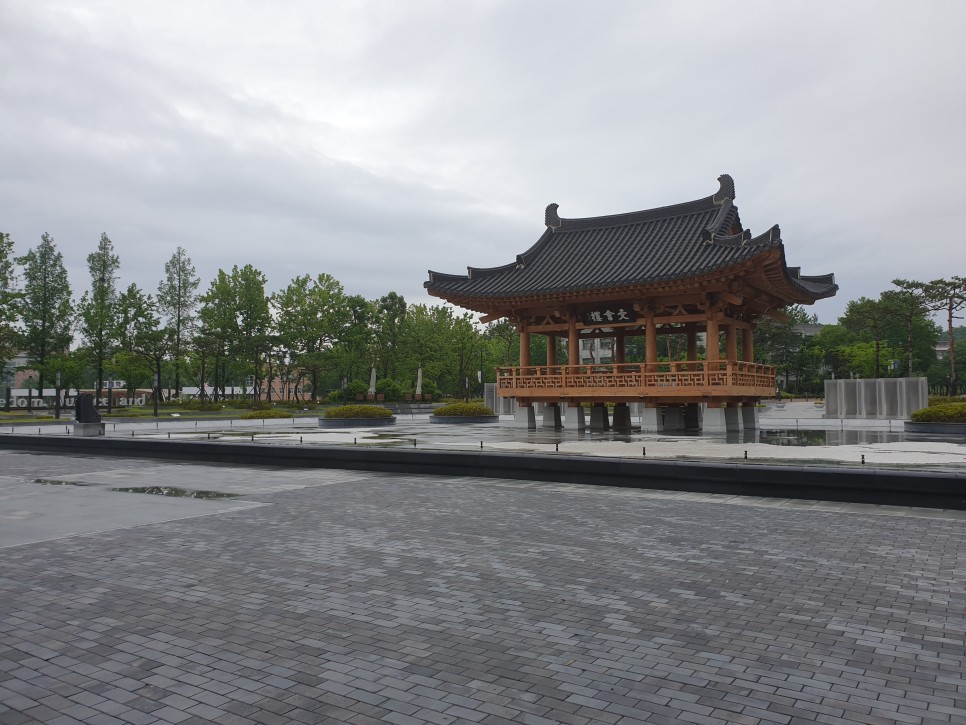
Munhoeru of Jeonbuk National University
Munhoeru is a traditional pavilion located in Jeonbuk National University, the center of higher education and research in the region.
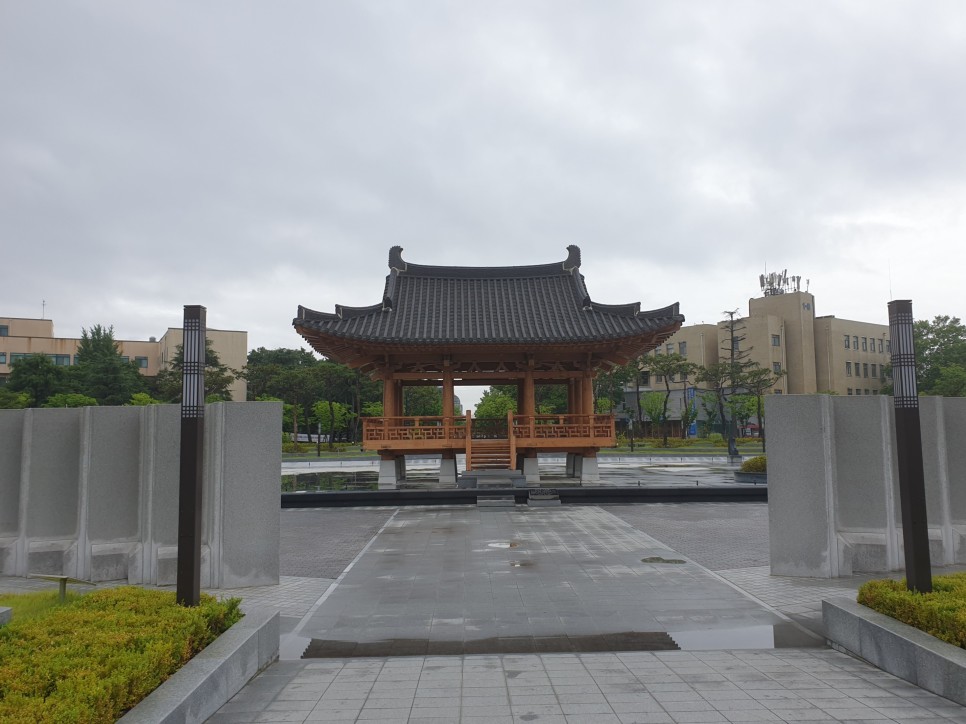
The name ‘Munhoeru’ means ‘making friends through learning’, which is quite fitting for a pavilion inside a university. The beautiful wing-like curve of the eaves is very impressive. Also, Munhoeru is surrounded by water fountain and modern-style plaza I found this a perfect harmony of the old and new.
Traditional pavilion hopping in Jeonju
Taejoro Jeongja (Jeonju Hanok Village) – Cheongyeonru (Namchungyo Bridge) – Omokdae – Hanbyukdang – Kirinbong Jeongja – Yeonjijeong (Deokjin Park) – Chunjiin Jeongja (Jeonbuk Provincial Office) – Munhoeru (Jeonbuk National University)
Keep in mind that the difference between ‘nu’, ‘jeong’, and ‘dae’ matters! When travelling Jeonjum I recommend some traditional pavilion hopping.
One interesting thing. It’s easier to make friends at the traditional pavilions. Maybe that’s why people built the pavilions in the first place.


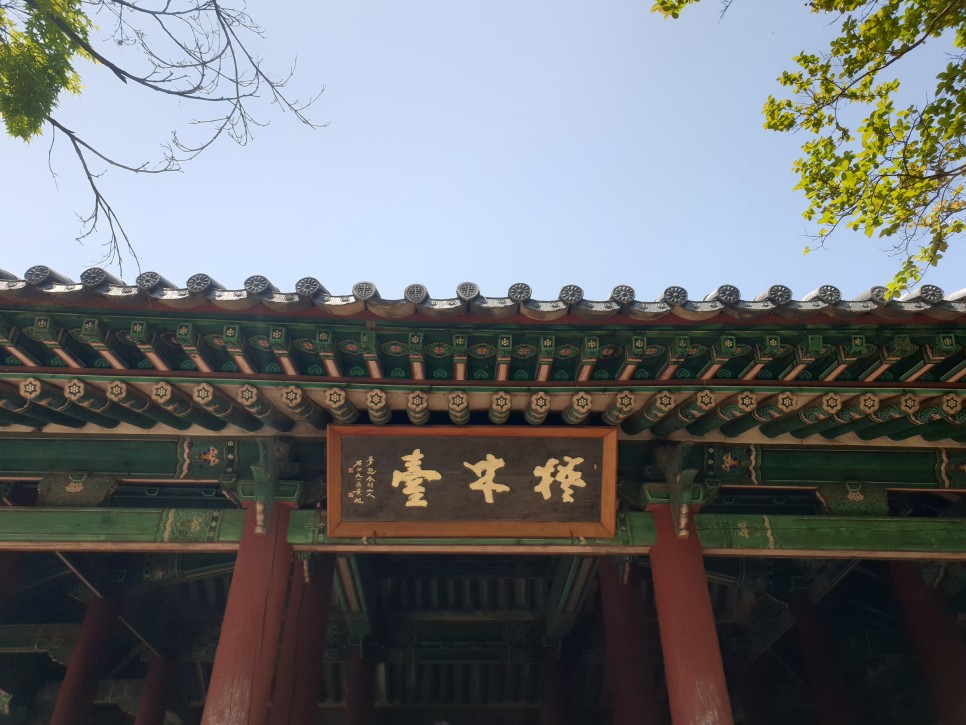
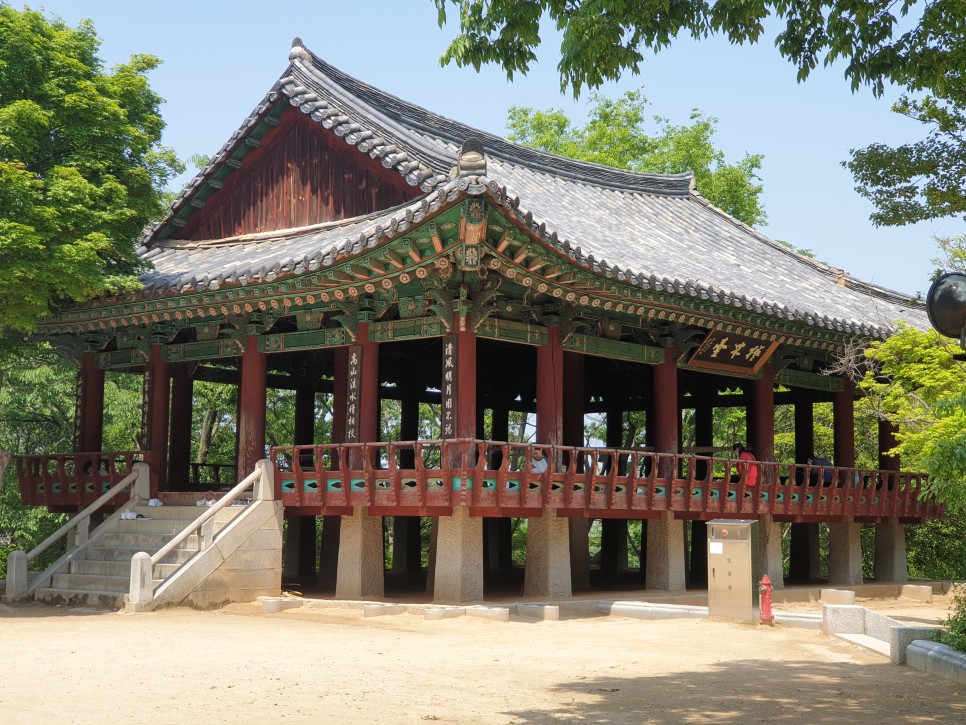


12 Comments